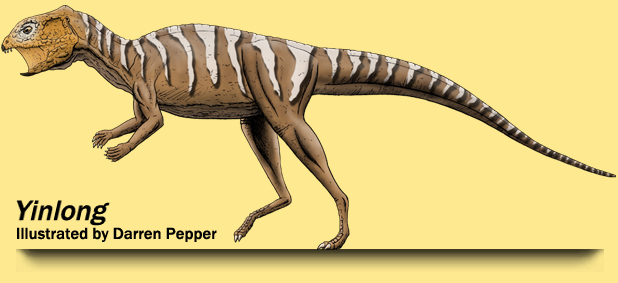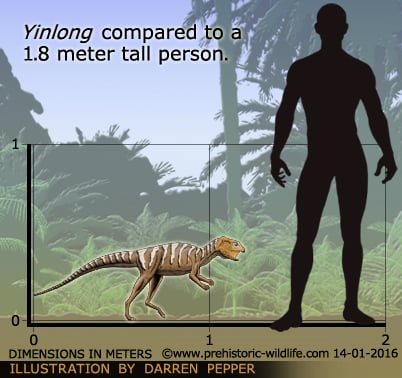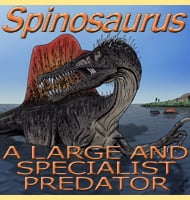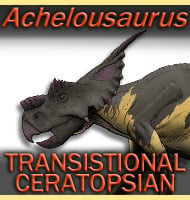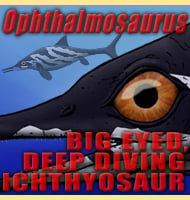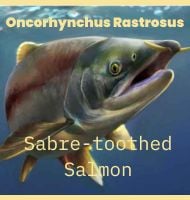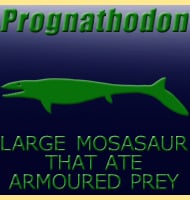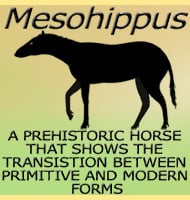In Depth
A very interesting find, Yinlong represents the earliest identifiable ceratopsian dinosaur. Despite its small size and bipedal stance, the descendants of Yinlong would evolve into the huge quadrupedal herbivores like Triceratops that lived at the end of the Cretaceous.
Study of the skull has revealed a small rostral bone, or more commonly called ‘beak’ that is indicative of the ceratopsian group. Squamosal ornamentation of the skull is also seen in the pachycephalosauria, further suggesting that they and the ceratopsian dinosaurs shared common direct ancestors. The skull also displays heterodontosaurid features further suggesting that the Marginocephalia are closely related to them.
While the teeth of Yinlong are undoubtedly those of a herbivore, gastroliths were also found inside the skeleton roughly where the stomach would have been. Not only would these mash swallowed plant matter to release further nutrients, this practice would also be carried down into successive generations and species.
Because Yinlong was discovered in Xinjiang Province, it was named ‘Hidden Dragon’ in reference to the multi award winning film ‘Crouching Tiger, Hidden Dragon’ large portions of which were filmed in Xinjiang. The species name is in remembrance to Will Downs, who was a frequent participant to Chinese expeditions.
Further Reading
– A basal ceratopsian with transitional features from the Late Jurassic of northwestern China. – Proceedings of the Royal Society of London B 273:2135-2140. – X. Xu, C. A. Forster, J. M. Clark & J. Mo – 2006. – Cranial anatomy of Yinlong downsi (Ornithischia: Ceratopsia) from the Upper Jurassic Shishugou Formation of Xinjiang, China. – Journal of Vertebrate Paleontology. – Feng-Lu Han, Catherine A. Forster, James A. Clark & Xing Xu – 2015. – Postcranial anatomy of Yinlong downsi (Dinosauria: Ceratopsia) from the Upper Jurassic Shishugou Formation of China and the phylogeny of basal ornithischians. – Journal of Systematic Palaeontology. – Fenglu Han, Catherine A. Forster, Xing Xu & James M. Clark – 2017.
